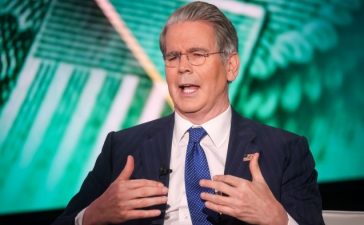
This is income received from another individual or firm. The salary a person gets from her employer is the deposit in the employer’s account that shifts to her’s. She retains part of this deposit in her account (savings) and spends the rest-that is, shifts to bank deposits of a seller of goods/services.
So, neither spending nor saving impacts the total deposits. It just determines in whose account the deposits reside. Money moving from one individual to another within the economy is called a transfer. Similarly, if rather than a financial saving, she chooses to invest in a physical asset (say, a house) or an equity share, the amount in her bank would just be transferred to the seller’s account, and aggregate deposits in the system are unchanged. China, for instance, has seen deposit growth in its banking system hover around 10% over the past decade despite the household savings rate being sustained at a higher rate of 35%.
Money and deposits are only created by banks. The central bank creates reserve, or high-power money, which is the liability on its balance sheet, primarily by printing currency. Additional deposits are created by commercial banks when they extend loans either to the government or private sector. Therefore, aggregate deposits in the economy are emanating from reserve money created by RBI and the money multiplier based on the credit extended by commercial banks.
Over the past two years, the pace of bank credit extension picked up to 15%, reflected in the money multiplier moving up to 5.4x in FY24 from 5x in FY22. However, the pace of money creation (M3 growth) remained unchanged at 10% as reserve money growth slowed to 5.6% in FY24 from a high of 18.8% y-o-y in FY21. This was primarily due to currency in circulation rising only 4% y-o-y in 2024 with withdrawal of ₹2,000 denomination notes.In the regulatory LCR (liquidity coverage ratio) framework, banks’ ability to extend loans depends on aggregate deposit growth and the type and source of deposits. Retail and wholesale deposits have large variances in expected run-off rates in LCR calculations. Therefore, while banks can lend up to 77.5% of retail term deposits, they can lend only about 55% of their callable wholesale deposits.Share of households in bank deposits has only changed marginally from 63% in 2018 to 61% since 2024. A much larger change has been visible in the share of government deposits, dropping from 14% to 9% and the share of corporate deposits increasing from 10% to 18%.
The rise in corporate deposits is representative of the turn in corporate profitability that has improved from 2% of GDP in 2018 to 5% now. The drop in gov deposits is also attributable to GoI migrating to a more efficient Just in Time (JIT) model. To improve efficiency of cash management, GoI has adopted the JIT system for the release of funds for payments in the last few years. This move has resulted in GoI maintaining relatively higher average balances with RBI and commensurately lower balances with banks.
Banks’ share of lower-cost CASA (current account savings account) deposits has moderated from a high of 42.6% in 2021 to 38.8% in 2024. This recent moderation can be attributed to a shift in savings behaviour, though the past 10-year average CASA share for banks has been similar at around 39.2%.
India’s credit to GDP multiplier has averaged 1.1x. To sustain double-digit growth in nominal GDP, the current pace of credit growth must be met. While concerns abound about weak deposit mobilisation limiting credit availability, this appears unlikely to be sustained as credit will create deposits.
An increase in the pace of household savings, or change in savings pattern, isn’t needed for deposit growth to pick up. With easing inflation and softer global rates, RBI’s comfort in infusing higher reserve money to boost M3 growth is likely to improve. This will create a virtuous cycle of improved reserve money creation boosting money supply, allowing faster credit and deposit growth.
The writer is chief investment officer, Axis Asset Management









